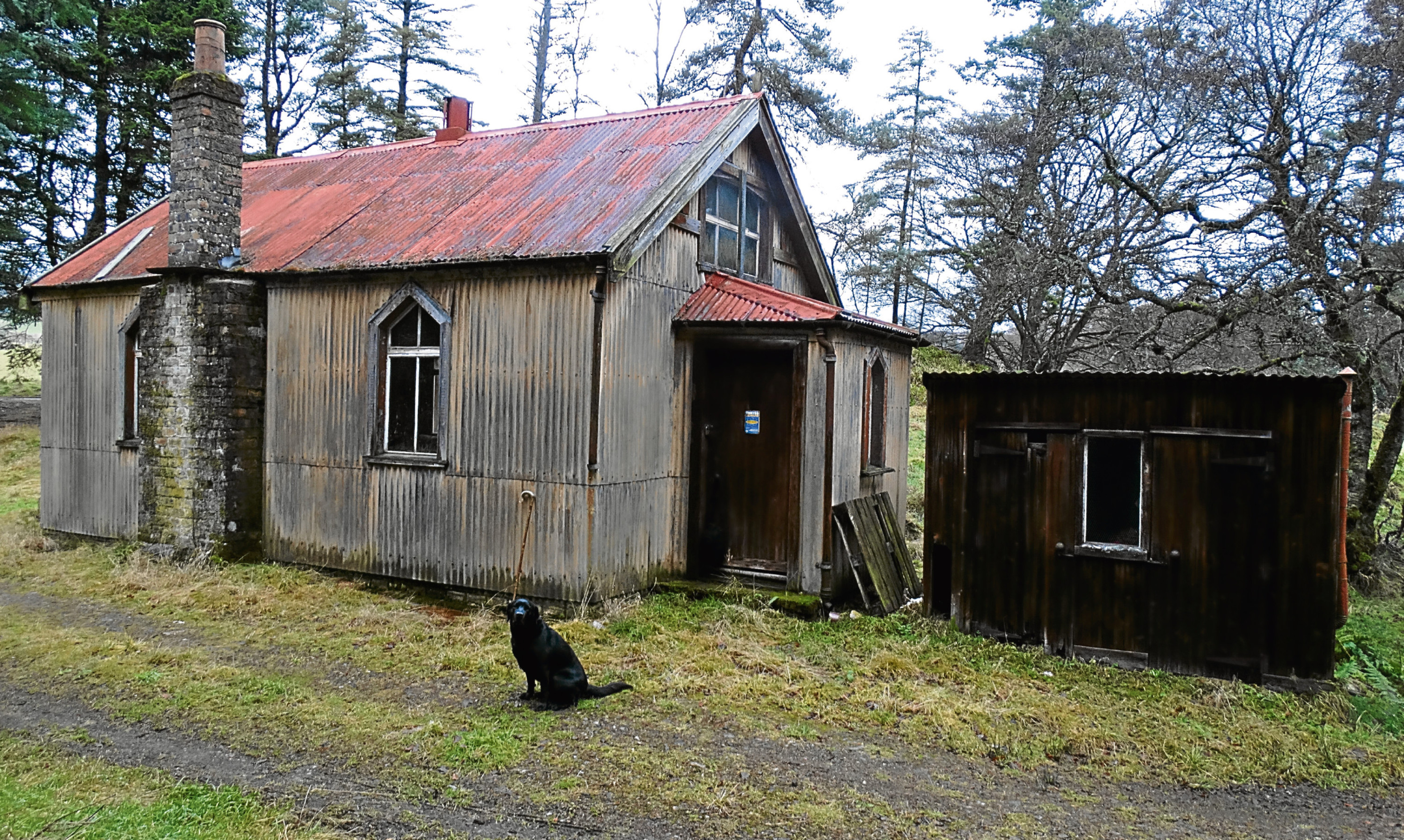Writing about Glen Prosen recently recalled a memory from more than 60 years ago.
My father grew up in Kirriemuir and Prosen was his favourite of the Angus glens. He was a great one for expeditions and one Saturday he took me to see a wee building hidden among woods at the foot of the glen. It was the Iron Kirk.
With Inka in the car I set off to track down the barely-remembered building my father had shown me.
I headed for the Prosen Bridge below Cortachy Castle and took the turning off the B955 to Kinwhirrie. I’m fond of that short stretch of road which crosses a ridge separating the foot of Glen Clova from Prosen. The views to east and west are memorable and I stopped for a moment for the pleasure of seeing them again.
At Pearsie crossroads, just below Pearsie House, I followed the road to Balintore. Scarcely 200 yards along that road a red iron oxide painted roof peeped above a high bank. It surely must be what I was looking for.
Iron Kirk
I pulled into a clearing and there was the small church known as the Iron Kirk, so called because it is made entirely of corrugated iron. It must be some number of years since it was last used for worship and it is looking a bit sad now.
Following the Disruption of the Church of Scotland in 1843 a number of ministers and their congregations broke away from the Established church and formed the Free Church of Scotland. Disputes arose over which denomination could claim the various church buildings which had hitherto been solely Church of Scotland.
Denied the church that had previously been their place of worship, the breakaway Free Church congregation in Prosen had to look elsewhere to hold their services.
There is not a great deal of information about the church – I don’t know the date it was built, for instance – but it seems its isolated site was grudgingly given to the congregation by the landowner at the time, who was not particularly sympathetic to their views.
Corrugated iron was invented in the late 1820s and by the beginning of the 20th Century was commonplace all over Scotland, particularly in the Highlands. It was utilitarian and cheap and the prefabricated sheets made for simplicity of construction, all of which must have appealed to the dispossessed Free Kirk congregation looking for a new home.
Loyal
Despite its modest size the kirk was attended by a large and loyal congregation from the glen which, over time, dwindled until it became too small to be viable.
The building was bought by a family in the congregation who hoped it could be used as a church again. Latterly, it was used as a shooting lunch hut but it lies empty now, its plain simplicity testimony to the faith of the people who built it.
In striking contrast is the Italian Chapel on Orkney, another corrugated iron church which is built inside two Nissen huts joined end to end.
It was created by Second World War Italian POWs who were working on the construction of the Churchill Barriers which were intended to block sea access to Scapa Flow and prevent a repeat of the disastrous sinking of HMS Royal Oak by a German U-Boat in 1939.
The Doyenne and I visited the chapel on a holiday to Orkney. It is a spectacular work of art which the Orkney community has maintained since the Italian prisoners returned home at the end of the war. Its rich interior reflects, too, in an altogether different way, the dedication to their faith of the men who created it.
After a walk through the woods with Inka I drove up to Prosen village at the head of the glen and the church which presumably was the one renounced by the dissenting Free Church congregation.
The douce exterior of the church doesn’t prepare you for the interior, which was redesigned in 1900 by the prolific Scottish architect Sir Robert Lorimer and contains some fine carvings commissioned by him.
There has been a church on the site since the 17th Century and the early ministers must have been hardy chiels. A finger post directs you to the start of the track known as the Minister’s Path which crosses the hills from Prosen to Glen Clova. One minister served the churches in both glens and twice each Sunday he walked the path to lead the services.
From almost any point in the glen you can see the top of the Airlie Tower built in memory of the 11th Earl of Airlie, who was fatally wounded at the Battle of Diamond Hill in 1900 in the Second Boer War.
I set off home down the east side of the glen. Once I’d left Dykehead behind and crossed the Prosen Bridge I took the diversion past Inverquarity Castle.
A large flock of fieldfares rose from a stubble field and accompanied me along the road for couple of hundred yards. It was the first of these winter migrants that I’ve seen this year.
